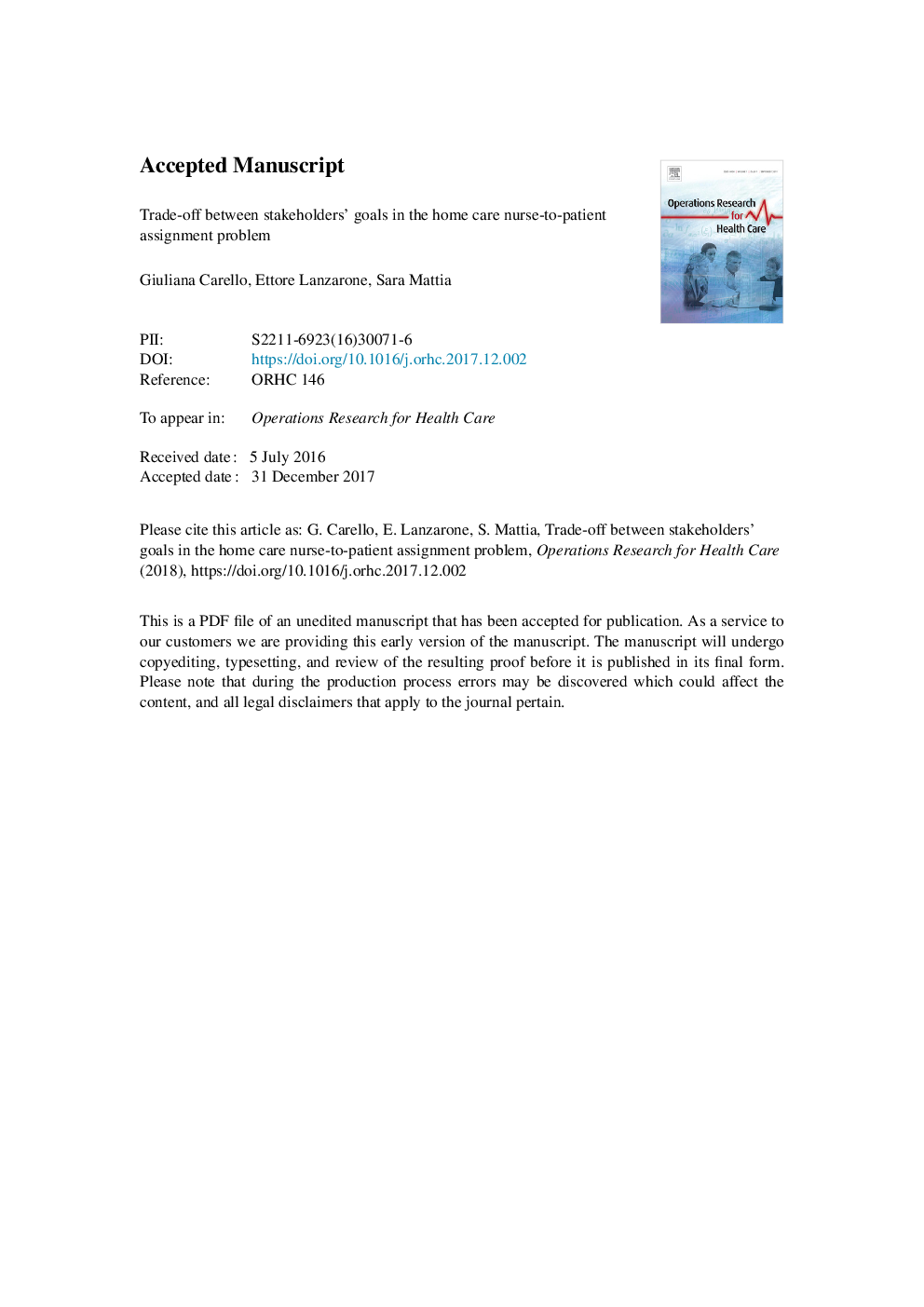| Article ID | Journal | Published Year | Pages | File Type |
|---|---|---|---|---|
| 7543557 | Operations Research for Health Care | 2018 | 39 Pages |
Abstract
Three stakeholders are involved in health care services: patients, operators and service provider managers. They usually have conflicting needs: patients aim at obtaining good quality of service, operators require fair workloads, and managers try to reduce costs. Moreover, a fourth stakeholder, i.e., the contracting authority, pays for the service and fixes the requirements in terms of costs, quality of service and working conditions, to guarantee that the needs of the three actors are all taken into account and well balanced. Home care services represent a relevant example in which all of the different stakeholder perspectives should be included in the decision process, whereas they have been never compared nor considered together in the literature. We propose a set of mathematical models for the nurse-to-patient assignment problem in home care under continuity of care, inspired to multi-criteria optimization, to investigate the effect of each stakeholder's goal on the others and their interactions. The three stakeholder perspectives are modeled as alternative objective functions of an integer linear programming model, and a threshold method to include all of them is proposed. The approach is then tested on real-life instances, and both deterministic and uncertain patient demands are considered. For the considered setting, results show that the service provider can achieve good quality of service and fair workloads with limited cost increase. Thus, including the other perspectives in the decision making process and respecting the service authority's requirements is not as costly as expected.
Keywords
Related Topics
Health Sciences
Medicine and Dentistry
Public Health and Health Policy
Authors
Giuliana Carello, Ettore Lanzarone, Sara Mattia,
